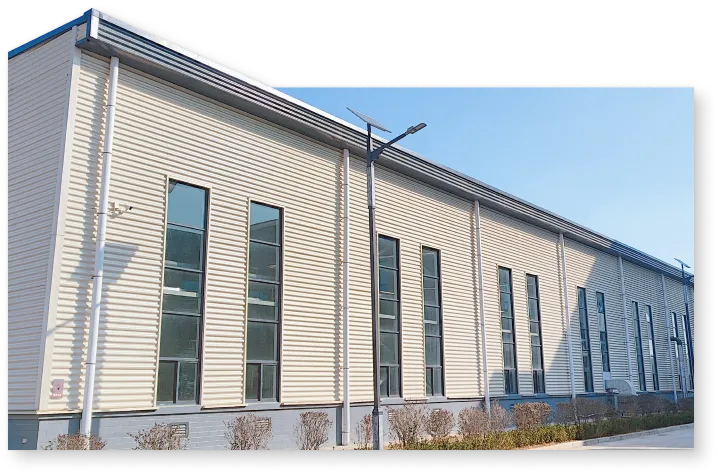
A steel structure cold storage is a warehouse or facility built with a steel frame, designed specifically for storing perishable goods at controlled low temperatures. These structures are widely used in the food, pharmaceutical, and chemical industries to preserve products that require refrigeration or freezing.
Problem: Steel is prone to corrosion due to moisture, condensation, and exposure to low temperatures, which can lead to structural deterioration over time.
Solution: Use galvanized or stainless steel components, and apply anti-corrosive coatings. Ensure proper insulation and vapor barriers to minimize condensation. Regular maintenance and inspections are essential to detect and address early signs of corrosion.
Problem: Thermal bridging occurs when a part of the steel structure allows heat transfer through it, causing temperature loss and condensation. This often happens at joints and fastenings.
Solution: Incorporate thermal breaks and insulated fasteners to interrupt heat flow. Use high-quality, well-insulated sandwich panels, and ensure airtight seals at joints, doors, and panel connections.
Problem: Condensation can lead to frost formation inside the cold storage, causing slippery floors and damage to goods. It can also lead to mold growth and degrade the insulation properties.
Solution: Ensure airtight construction and properly insulated floors, walls, and ceilings. Use vapor barriers and install dehumidifiers to control humidity levels. Design doors with air curtains to reduce warm air infiltration.
Problem: Cold temperatures can cause the ground beneath the storage floor to freeze, leading to frost heave, which may damage the floor and the foundation.
Solution: Install insulated flooring and consider using heating cables or underfloor heating systems to prevent frost heave. Proper drainage around the foundation is also crucial to prevent water accumulation.
Problem: Variations in temperature can lead to the spoilage of temperature-sensitive products. Inadequate airflow or poorly designed refrigeration systems may cause hot or cold spots within the storage.
Solution: Implement an efficient and well-distributed HVAC system with good airflow. Regularly check refrigeration units and evaporators for consistent operation and set up alarms for deviations in temperature or humidity.
Problem: Cold storages often accommodate heavy racking systems and material handling equipment like forklifts. Uneven distribution of loads or poor planning can lead to structural damage or deformation.
Solution: Design the structure to support anticipated loads and factor in dynamic loads from moving equipment. Use reinforced steel and conduct regular structural inspections to identify stress points.
Problem: Cold storages consume significant amounts of energy due to continuous cooling, which can lead to high operational costs. Poor insulation or inefficient equipment increases energy consumption.
Solution: Invest in high-quality insulated panels, energy-efficient refrigeration units, LED lighting, and solar panels if feasible. Regular maintenance of equipment can also help to optimize energy consumption.
Problem: Ice buildup on evaporator coils and other equipment reduces efficiency and increases the energy load on the system. Ice formation can also lead to airflow obstruction and damage.
Solution: Schedule regular defrost cycles and use equipment with automatic defrosting capabilities. Proper air circulation and humidity control are crucial to minimize ice buildup.
Problem: Cold storage facilities may face challenges when expanding or modifying existing structures, particularly if the initial design did not account for future expansion needs.
Solution: Design the facility with modularity in mind, allowing for easy expansion. Use flexible racking systems and maintain open spaces where future extensions can be planned.
Problem: Cold storage facilities can be susceptible to fire risks due to electrical equipment, insulation materials, or refrigerant leaks. Fire hazards are particularly critical in large, enclosed areas.
Solution: Use fire-retardant insulation materials and install fire detection and suppression systems suitable for low temperatures (like dry-pipe sprinklers). Implement strict safety protocols for electrical systems and refrigerant handling.
Problem: Leaking refrigerants not only affect cooling efficiency but can also pose environmental and safety risks, especially with older refrigerants that are harmful to the ozone layer.
Solution: Regularly inspect and maintain the refrigeration systems. Use modern, eco-friendly refrigerants like ammonia (NH3) or hydrofluoroolefins (HFOs) and train staff to identify and address leaks promptly.
Problem: Due to the complexity of cold storage facilities, maintenance of refrigeration units, insulation panels, doors, and steel structures can be time-consuming and costly.
Solution: Develop a regular maintenance schedule for all critical systems and train personnel to carry out basic inspections and minor repairs. Consider investing in automated monitoring systems to track temperature and equipment performance.